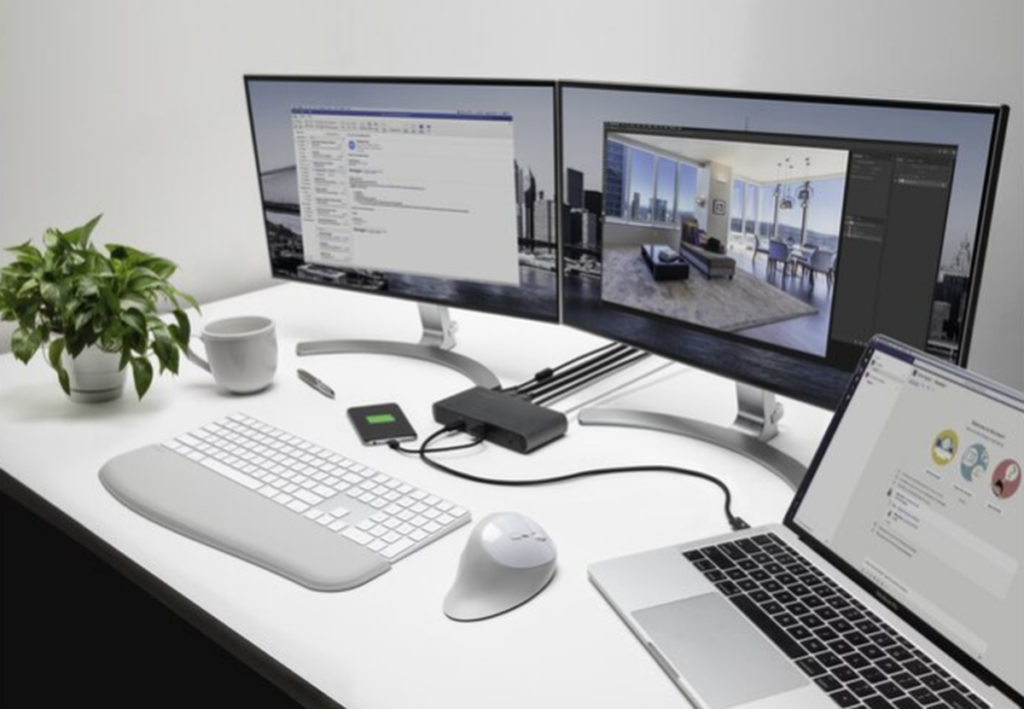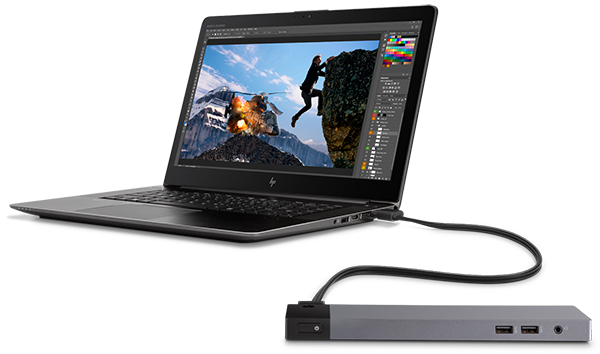What is the speed of laptop docking station dual monitor data transfer?

The Laptop docking station dual monitor seems familiar, but not many people understand what kind of communication docking station it is. Let's find out what a USB docking station is, and what it is common for on today's technology devices.
First What is a USB docking station?
USB, short for Universal Serial Bus, is a standard cable connection docking station for personal computers and consumer electronic devices. In other words, the Laptop docking station dual monitor allows devices come with a USB docking station to connect. And transmit digital data via USB cables, even transferring electrical power to devices that need electricity to operate.
Devices with USB docking stations
Most computers today have at least one USB docking station such as:
- Desktop computer: usually have 2 - 4usb docking stations in the front and 2 - 8 usb docking stations in the back of the CPU case.
- Laptop: There are 1 - 4usb docking stations on the left, right, or both sides of the laptop.
- Tablets: usually the Laptop docking station dual monitorintegrates right at the charging docking station. This will belong to the micro USB docking station type, sometimes the USB-C docking station type.
- Smartphone: Similar to a tablet, the USB docking station on a smartphone comesinto the charging docking station and data transfer docking station in the form of USB-C or micro USB .
Devices easy to connect via USB
Today, many devices are easy to connect via USB such as:
- Digital camera.
- External drive.
- iPod or MP3 players.
- Also connected Keyboard.
- Computer mouse.
More Devices that can be connected via USB
- Jumpdrive aka thumb drive.
Uses of USB docking stations
The USB docking station is responsible for transferring data between devices equipped with a USB docking station without using the network.
In addition, this interface also has the function of transmitting power to devices that need electricity to operate, even to charge the device's battery.
How to use the USB docking station?
You can use docking station using different available connection devices.
Note: Some devices have multiple USB docking stations, do not plug both ends of the cable into the same device because it is easy to cause electrical shock and device damage.
You can plug the cable into the USB docking station at any time, regardless of whether the connected devices are in working condition (on or off)
More instructions How to use the USB docking station?
For some devices, don't forget to refer to the instructions recommended by the manufacturer before plugging in - unplugging the USB cable. Because of improper operation, it will damage the device as well as the data files being transferred between devices.
Multiple USB devices are easy to connect using a USB hub. That is, with just one USB Hub device, you can plug in not only one Laptop docking station dual monitor, but also add more USB docking stations to connect more devices.
So, if using a USB hub, plug in a separate cable to each device and connect them to a separate hub.
Today's popular USB docking station standards
USB docking stations come in different shapes and transfer rates, you can distinguish them as follows:
USB-A (Type A)
The USB A connector is rectangular with a length of about 1.4 cm (9/16 inch) and a height of 0.65 cm (1/4 inch). This is the most common Laptop docking station dual monitor, commonly common for wired mice and keyboards.
USB-B (Type B)
Less common than type A, USB B docking stations are roughly square. Moreover, we find them on routers, computers, printers, and game consoles.
How to work Micro USB?
This is considered a new version of both USB-A and USB-B interfaces. This type of docking station is common on mobile devices.
In addition, micro USB docking stations are also found on some older devices, such as digital still cameras and computer peripherals. However, the mini Laptop docking station dual monitor has almost been replaced by micro-USB and USB-C cables today.
USB-C (Type C)
The USB-C docking station has a size of 0.84 cm x 0.26cm, which is the latest type of docking station to date. It is popular on mobile devices with a size that looks slimmer and smaller. The highlight of this type of docking station is that it is reversible and still fits into the device.
Laptop docking station dual monitor Sort by the baud rate
USB 1.x
It is a standard usb docking station that Laptop docking station dual monitor stations data transfer rates of 12 Mbps and is capable of sup docking stationing up to 127 peripheral devices.
USB 2.0
Called Hi-Speed USB , it was developed by many computer manufacturers such as Hewlett Packard, Intel, Lucent, Microsoft, NEC and Phillips, and appeared on the market in 2001. This type of USB is capable of supdocking stationing transfer speeds. up to 480 megabits per second (Mbps) or 60 megabytes per second (MBps).

USB 3.0
Another name is SuperSpeed USB , first introduced in November 2009 by Buffalo Technology, but it was not until January 2010 that it officially appeared on the market.
This type of USB docking station is somewhat improved over USB 2.0 in terms of speed, performance, power management and bandwidth. It consists of two unidirectional data paths to perform operations - receiving and sending data at the same time.
USB 3.1
Also known as SuperSpeed+ , is the latest version today when introduced on July 31, 2013. The USB 3.1 docking station offers transfer speeds of up to 10 Gbps , matching the first generation of Apple 's Thunderbolt docking stations .
Many devices today use versions of USB 3.0 and 3.1 docking stations to improve performance and speed
Conclusion
The USB docking station can Laptop docking station dual monitor station in any version adjacent to each other. For example, devices designed with USB 1.1 and 2.0 docking stations can work with USB 3.0 docking stations. However, the speed is only at USB 1.1 and 2.0, not the transfer speed at USB 3.0.








